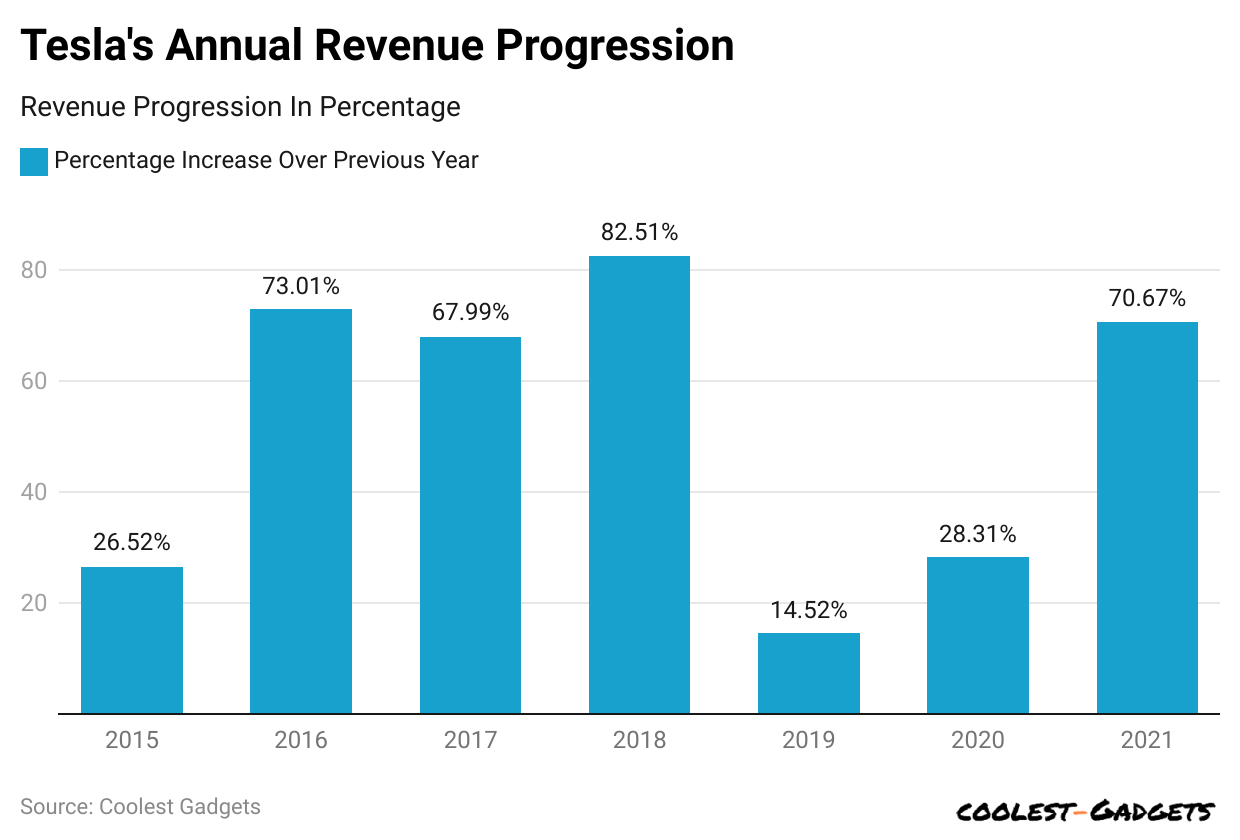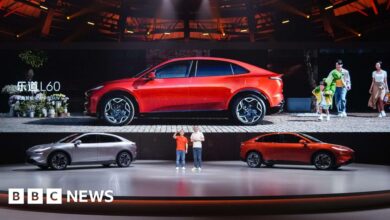Electric Vehicle Statistics By Market Size and Infrastructure

WHAT WE HAVE ON THIS PAGE
Introduction
Electric Vehicle Statistics: An electric vehicle, also known as an EV, is a type of vehicle powered by one or more electric motors or traction motors. Like classic ICE vehicles that run on gasoline or diesel, electric vehicles are powered by energy stored in batteries or supplied by an outer power source. The basic energy source for an Electric Vehicle is electricity, which is converted into mechanical energy to drive the vehicle.
Various types of EVs cater to various needs and likings, offering options for emissions reduction, energy efficiency, and varying ranges. As various technological innovations occur, the electric vehicle landscape innovates, with more models and variations becoming available for customers. This article sheds light on detailed electric vehicle statistics.
Editor’s Choice
- Volkswagen’s share of the European electric vehicle market was almost 24.2% in 2021.
- The United Kingdom was Europe’s second-largest electric vehicle market with a market share of 13.9% in 2020.
- By 2024, the number of electric vehicle models available in the United States will grow from 64% to 121%.
- Tesla was the leading electric vehicle manufacturer with a market share of 16% in 2020.
- From 2020- 2027, global electric vehicle sales are projected to increase at a yearly rate of 29%.
- In 2021 the average electric vehicles have an almost 181-mile range.
- Europe produced almost 24% of the worldwide electric vehicle battery capacity.
- In 2021, the most affordable electric car in the United States is the Mini Cooper SE, that too at a starting price of $29,900.
- The total number of public electric vehicle charging stations in the United States at reach 100,000 in 2021.
- By 2050, the increase in electric vehicles in the US will reduce gasoline demand by about 70% and up to 35%.
- Globally, China is estimated to account for 44% of all battery electric vehicle sales in 2021.
- In 2020, the most famous electric car worldwide was the Tesla Model 3 with over 365,000 units sold.
- Around 3.24 million electric cars were sold globally in 2020.
- Worldwide Electric Vehicles sales are projected to increase from 2.5 million in 2020 to 11.2 million in 2025 and will reach up to 31.1 million by 2030.
Electric Vehicle Market
- The year 2020 resulted to be a lucky year for the EV, as globally its sales started growing by 43% and the global electric car industry market rose a record 4,6% in 2020.
- In 2021 the sales of Electrical Vehicles doubled to almost 6.75 million.
(Source: virta.global)
- Electric Vehicles had an ambition of a zero-emission target by 2050.
- In 2022, the sales of electric vehicles grew to 10 million with 14% of all the new cars that are sold being electric from 9% in 2021 and less than 5% in 2020.
- As all the countries are carried by a decarbonization challenge., the sales are projected to grow higher in 2023.
- Globally in 2022, almost 60,000 medium to heavy-duty trucks were sold.
- In the first quarter of 2022, almost 2.3 million electric vehicles were sold and that is almost 25% more than the previous year.
- As per electric vehicle statistics, the sales of EVs will be 14 million by 2023.
- In 2022, Europe experienced a decrease their sales as compared to 2021. Despite this, it remained the 2nd largest market for electric vehicles.
- As per the Global EV Outlook by IEA in 2023, Germany, Netherlands, Sweden, and Norway are the biggest users of Electric vehicles.
- The sales share of electric light commercial vehicles was higher than that of passenger electric vehicles for the first time in 2022.
- In 2022 the electric LCV’s sales had huge growth and the sales increased by 90%.
- Globally there were almost 310,000 electric LCVs in 2022.
- In 2022, the United States and Europe proposed a high emission standard for heavy-duty vehicles.
- In 2022, nearly 66,000 electric buses were sold worldwide.
- China dominates the market as it accounts for almost 80% of the global electric bus sales.
- Finland saw Europe’s highest sales share of electric buses in 2022 accounting for more than 65% there.
- Despite a drop in sales from almost 10 million in 2021 to less than 7.7 million in 2022, China dominates the electric two-wheeler market.
- India leads the race for two-three-wheelers worth almost 425,000 units sold in 2022.
- In 2022, almost 350,000 three-wheelers were sold in China. India and China accounted for nearly 99% of the worldwide sales.
- There were almost 2.7 million public charging points worldwide in 2022.
- Accounting for 55% growth from 2021, nearly 900,000 of the public charging points were installed.
- In China, 360,000 slow and almost 297,000 fast charging points were installed.
- It is projected that by 2050 almost 1.3 million charging stations will be publicly accessed and it will increase to 2.9 million by 2030.
- In 2022, Italy and Spain also rank at the 5th position with Spain’s public charging infrastructure growing by 223%.
- Slow charging points will be replaced by fast and ultra-fast charging in Europe in 2022.
- In 2022, the number of fast chargers was almost 55% and it reached nearly 70,000 units.
- By 2024, the V2G market is estimated to grow to almost $4.5 billion.
- The Electric vehicle battery demands an increase of 65% from the previous sales of the batteries in 2022.
- As per Bloomberg NEF, Europe’s share of the worldwide battery that is produced could rise to 31% by 2030.
- In 2022, Electric Vehicles consumed almost 110 terawatt-hours of electricity doubling from the last years.
- By 2030, electric vehicles are estimated to account for less than 4% of the worldwide electricity consumption.
- In 2022, the electric vehicles used saved almost 80 million tonnes of GHG emissions from EVs worldwide.
- The EV-related policies related to almost 90% of the worldwide LDV sales and 70% of the HDV and three-wheeler sales in 2022.
Electric Vehicle Statistics
- The global electric vehicle sales show almost 2.5% of all vehicles.
- In 2020, the EV market share went from 2.3% in the United States.
- The electric vehicles maintained their value over time 2.3 times better than average internal combustion vehicles.
- In 2020, there were 10.8 million EVs worldwide.
- By 2035, it’s predicted that more than 50% of all the new passenger vehicles sold globally will be EVs.
- The United States had almost 331,000 public and private EV charging points in 2020.
- Virtually 98% of the electric vehicle owners stated that they would never shift to gas cars.
- In 2020, there were almost 10 million electric cars worldwide.
- Global electric vehicle sales are projected to grow from 2.5 million in 2020 and 11.2 in 2025 and 31.1 million by 2030.
- An electric vehicle produces less than 50% of the emission of a gasoline car.
- In 2020 Norway had the highest use of electric vehicles with almost 49.1% of all new sold cars.
- 54% of the newly sold cars and 33% of the global car fleet are estimated to be electric vehicles.
Electric Vehicles Industry Forecast
- As per Motor Intelligence, worldwide electric vehicles are estimated to be valued at $1.047 trillion by 2026.
- The global electric vehicles market was valued at $260.63 billion in 2020.
- By 2026 the growing demand and the innovated technology means that the electric vehicles market is set to develop four times.
- The worldwide yearly revenue will exceed $1 trillion at a projected figure of $1.047 trillion by 2026.
- By 2030 the minimum range of an electric vehicle is predicted to increase by 140kms.
- The average range of an electric vehicle is almost 300 km. It is projected to leap to 380 km by 2050 with the improving innovations and also an average of 440 km by 2030.
- As per Bloomberg NEF, the number of EV passengers is set to quadruple by 2026.
- In the year 2023, there were almost 12 billion electric vehicles on the road globally.
- As per HIS Markit, almost 50% of all electric vehicle users are estimated to be manufactured in Asia in 2027.
- It is estimated that in China it is positioned as the number one global producer of electric vehicles with a 4.35 share.
- Japan and South Korea are predicted to produce almost 11.6% of the world’s electric vehicles in 2027.
- Europe is projected to account for only under 29.2% and North America to manufacture a little over 1 in 10 EVs of 11.6%.
Top Electric Vehicles Industry Statistics
- The EV industry is experiencing noteworthy growth with the worldwide EV market at almost $200 billion.
- More than 10 million EVs are presently running on the road with almost 6 million plug-in electric vehicles sold annually in 2023.

(Reference: market.us)
- By 2050, industrial growth is estimated to continue with an electrical vehicle predicted to account for 46% of light-vehicle sales.
- Nearly 14% of all the new cars sold in 2022 were EVs, up from around 9% in 2021 and 5% in 2020.
- China has the biggest EV market with almost 40% of the total sales estimated by 2030.
- The United States had broken all the records in 2022 by just under 918,500 LEV sales.
- The electric vehicle market is split into many manufacturers with no single manufacturer holding a market share of almost 15%.
- With around 14.55% Tesla is the largest market share.
- Tesla has sold almost 40% more than any other EV manufacturer in 2021.
- Volkswagen estimated a decline in the market share moving from 14% in Q2 2021 to Q1 in 2023.
- The growth track continued into 2020, with a considerable 28.31% increase in bringing the yearly turnover to 31.536 billion.
EV Statistic Through Charging Infrastructure
- In the world, more than 600,000 charging points for public use were set up in 2022, of which China contributed 360,000 of the total, resulting in an estimated number of one million slow chargers throughout the nation by the close of the calendar year.
- In 2022 there was a global increase of 330,000 fast chargers. China is the largest contributor to the rate of growth of 90%.
- China has more than 50 percent of world stocks of public chargers by 2022.
- Europe as the second largest contributor to the total slow charger topped 460,000 in 2022, an impressive 50% increase over last year.
- China has more than 760,000 fast chargers, even though over 70% of public charging stations are within 10 provincial areas.
- The Netherlands on the other on the other hand claims to hold the leading place in Europe with close to 117,000 France with nearly 74,000, and Germany with approximately 64,000.
- In Europe, the speed chargers have reached a peak of 70,000 by 2022.
- In the meantime, it was reported that the United States observed a moderate increase of 9% in the slow charging stick by 2022.
- Korea has a doubling year-on-year increase in the number of charging points that is slow.
- Germany with nearly 12,000 units is the leader in rapid charging France with 9700 units, and Norway with close to 9,000.
- In the United States set up almost 6,300 fast chargers thanks to the help of Tesla superchargers.
- In 2022, the United States’ overall number of fast chargers will grow to 28,000.
Electric Vehicles Fire Statistics
- As per the study, 1.77 million PHEVs and BEV the relative fire risk in the Nordic nations was seen that were similar to that of fossil fuel-powered cars.
- An SAE International paper states that the frequency of the EV catching fire was almost 1 out of every 120 million miles traveled as compared to 1 every 26 million miles for a gasoline vehicle.
- The electric vehicle fires accounted for just 0.1% of the total vehicle fires in Norway in 2020.
- The US Fire Administration notes a thermal runway risk in 1 out of every 20 million Li-ION battery cells.
- In 2020, China experienced 40 instances of New Energy Vehicle fires that were reported in the first six months of 2020.
- Electric vehicle fires account for less than 1% of the total vehicle fires.
Most Expensive Electric Car Statistics
- In 2021, the Rimac Nevera stood out as the priciest electric car, hitting a hefty $2.44 million price tag. This indicates its elite status in the market, appealing to those seeking luxury and exclusivity in their electric vehicle choice.
- Similarly, the Lotus Evija, priced at $2 million in 2020, showcased its premium appeal among electric sports cars, emphasizing its high-end positioning and exclusivity.
- The Pininfarina Battista, priced at approximately $2.5 million, further exemplifies the luxury electric vehicle market, offering top-notch technology, performance, and design to affluent consumers.
- Looking ahead, the Rolls-Royce 103EX Vision Next 100 is expected to enter the market with an estimated $3 million price tag, targeting a select group of wealthy customers valuing luxury and innovation.
- Meanwhile, Tesla’s Roadster (2022) hits a high price point of $200,000, positioning itself as a top-tier electric car in Tesla’s lineup, appealing to affluent consumers seeking a luxury electric driving experience.
- Automobili Pininfarina’s Battista boasts an impressive 1,874 horsepower, coupled with a price tag of approximately $2.3 million, reinforcing its status as a high-performance luxury vehicle.
- Lotus’s limited edition Evija electric hypercar, restricted to 130 units, emphasizes its exclusivity and rarity in the market, appealing to collectors and enthusiasts.
- Rimac’s production of only 150 units of the Nevera electric hypercar, priced at $2.44 million each, highlights its limited availability and high demand among luxury electric car enthusiasts.
- The Tec Rules Ren, priced at $2.93 million, stands as one of the most expensive EVs in the industry, offering advanced technology and luxurious amenities for discerning buyers.
- Detroit Electric’s SP:01, priced at $135,000, offers a blend of luxury, performance, and electric power, appealing to buyers seeking a thrilling driving experience.
- Nio’s EP9, priced at $1.2 million, represents the luxury end of the electric vehicle market, offering advanced technology and exclusivity to affluent consumers.
- The Drako GTE, priced at $1.25 million, showcases its high-performance capabilities with an impressive 1,200 horsepower, appealing to enthusiasts seeking top-tier electric supercars.
- In terms of speed, the Rimac Nevera accelerates from 0 to 60 mph in just 1.85 seconds, showcasing its exceptional performance capabilities.
- While these luxury electric vehicles cater to a niche market of affluent consumers, more affordable options like Xpeng Motors’ P7 sedan, starting at approximately $33,396, aim to make electric cars accessible to a wider audience.
- Tesla’s Model S Plaid, priced at $129,990, offers both luxury and performance with a range of 390 miles, appealing to buyers seeking high-end electric vehicles.
- Lotus EVIJA’s top speed exceeding 200 mph emphasizes its sports car performance, attracting enthusiasts seeking thrilling driving experiences.
- Overall, the electric vehicle market offers a diverse range of options catering to various preferences, from luxury and exclusivity to affordability and performance.
Electric Vehicles Sales Statistics
- South Korea’s EV sales have grown by 52% with almost 56,203 units in 2020.
- The electric vehicle sales market in Japan increased its sales by 22% as compared to the previous years with sales totaling almost 32,000 units.
- In India, the EV sales reached almost 238,000 units in 2020.
- Electric vehicles are predicted to account for almost 10 – 15% of the total vehicle sales worldwide.
- The Netherlands saw a 24% increase in electric vehicle sales in 2020.
- Electric vehicle sales in Germany have increased by 207% as compared to the previous year.
- Electric vehicles have made up almost 54% of all the new car sales in Norway.
- At the end of 2020, there were almost 10 million electric vehicles on the road.
- The electric vehicle sales in the UK increased by 186% compared to 2020.
- The Tesla Model 3 has been the best-selling electric vehicle so far globally.
- In the United States, the EV sales grew by 4% in 2020.
- The electric vehicle sales in China were almost 1.3 million in 2020.
- European total EV sales market reached 1.4 million in 2020 a 137% higher than the previous year.
- In 2020, the sales of electric vehicles were taken over by Europe rather than China.
Conclusion
To conclude the flow in the EV’s popularity reveals a noteworthy shit in worldwide transportation. The electric vehicle statistics that we discussed above show us the increasing public alertness about the environment and the advantages of electric vehicles and the economic benefits they offer and also the increasing will of the government and private organizations to invest in this innovation.
This will result in evolving the electric vehicle sector setting new standards and casting the transport norms of the future again. With these challenges and obstructed will come hand-in-hand like infrastructural upliftment for charging spots, we have to accept them and move ahead.






